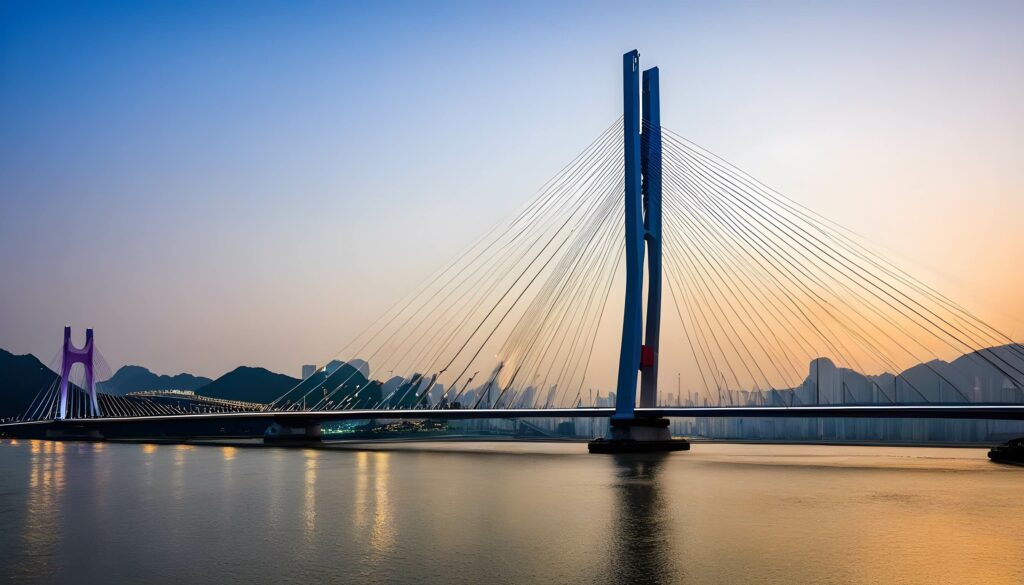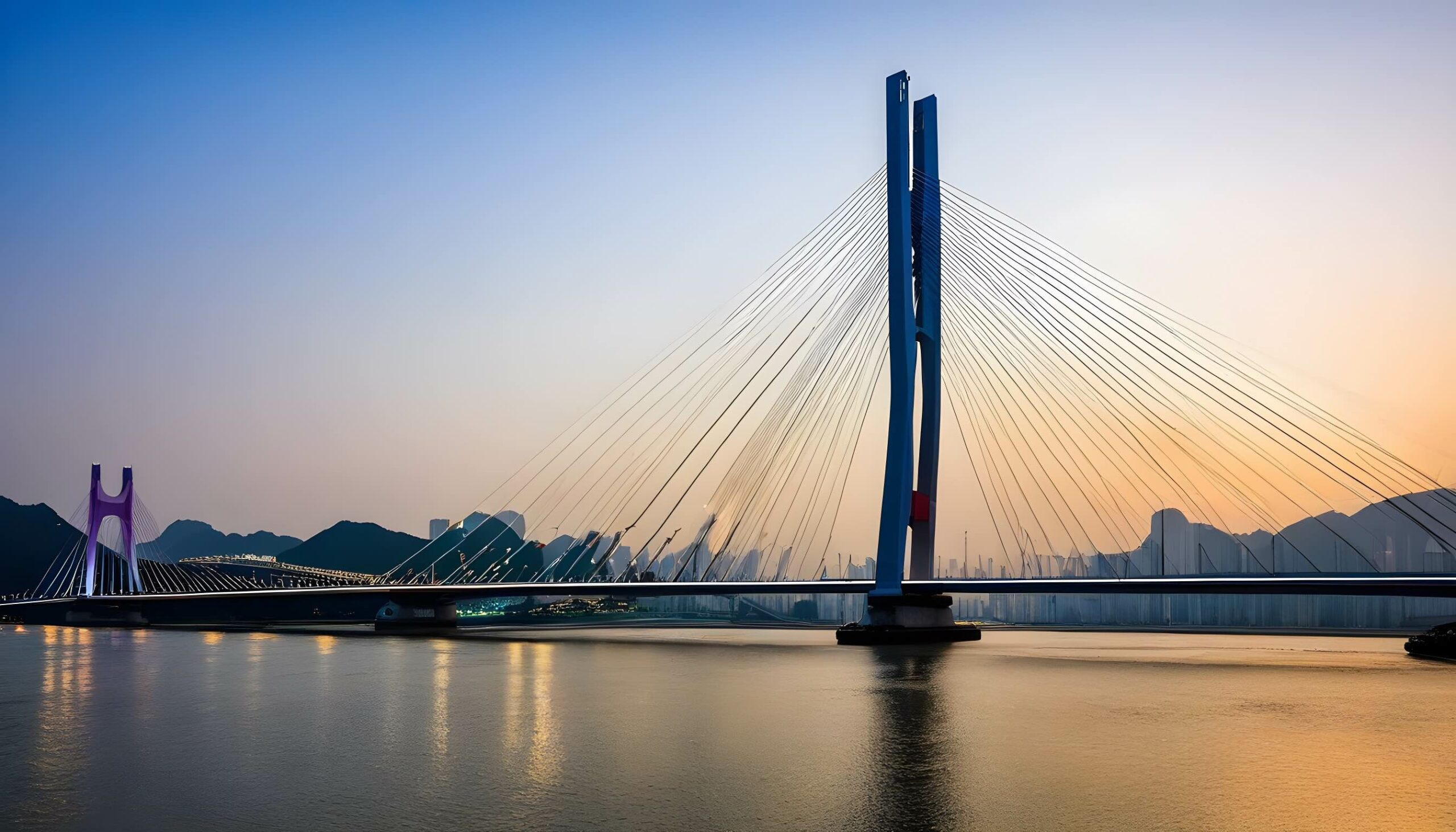The Shenzhen-Zhongshan Bridge, a monumental infrastructure project, recently achieved a crucial milestone with the completion of its mainline. This 24-kilometer link, connecting the two cities across the Pearl River, is slated to open in 2024, drastically reducing travel time between them from two hours to just 30 minutes.

This ambitious project comprises two bridges, two artificial islands, and a remarkable two-way, eight-lane sea tunnel, making it one of the most challenging cross-sea undertakings worldwide. The 6.8-kilometer long and 46-meter wide sea tunnel stands as the world’s largest and widest undersea steel shell concrete tube tunnel, showcasing the project’s impressive scale and technological innovation.
The Shenzhen-Zhongshan Bridge serves as a critical artery, enhancing connectivity within the Guangdong-Hong Kong-Macao Greater Bay Area (GBA). It bridges the gap between the city cluster of Shenzhen, Dongguan, and Huizhou in the eastern Pearl River Delta and the cities of Zhuhai, Foshan, Zhongshan, Jiangmen, and Zhaoqing in the western region, fostering closer collaboration and economic development across the GBA.
Since its inception in late 2016, the project has achieved remarkable feats, breaking several world records. The undersea tunnel, constructed with 32 immersed tubes and a final joint, holds the titles of the world’s first two-way, eight-lane steel and concrete tube tunnel, and the world’s longest concrete tube tunnel. This impressive feat of engineering allows for a maximum speed of 100 kilometers per hour.
The Lingdingyang Bridge, standing 91 meters above the sea surface (equivalent to a 30-story building), ensures unobstructed passage for the world’s largest container ships. Its two anchorages, each weighing a staggering 1 million tons, are supported by bases the size of 17 basketball courts combined. These mammoth structures serve to counterbalance the bridge’s weight and withstand vehicles weighing up to 100,000 tons.
The west artificial island boasts a unique diamond-shaped design, minimizing its impact on water flow. Inside the tunnel, safety remains paramount. Drivers on both sides are separated by walls, preventing visibility between lanes. The hollow walls conceal a pipe rack housing vital infrastructure, including telecommunication cables, pipes, electricity, and firefighting equipment. Additionally, emergency exits located above the pipe rack provide safe escape routes for drivers and passengers in case of unforeseen circumstances.
The Shenzhen-Zhongshan Bridge stands as a testament to human ingenuity and engineering excellence. This groundbreaking project not only facilitates travel between two major cities but also symbolizes the interconnectedness and progressive spirit of the Guangdong-Hong Kong-Macao Greater Bay Area.


Leave a Reply
You must be logged in to post a comment.